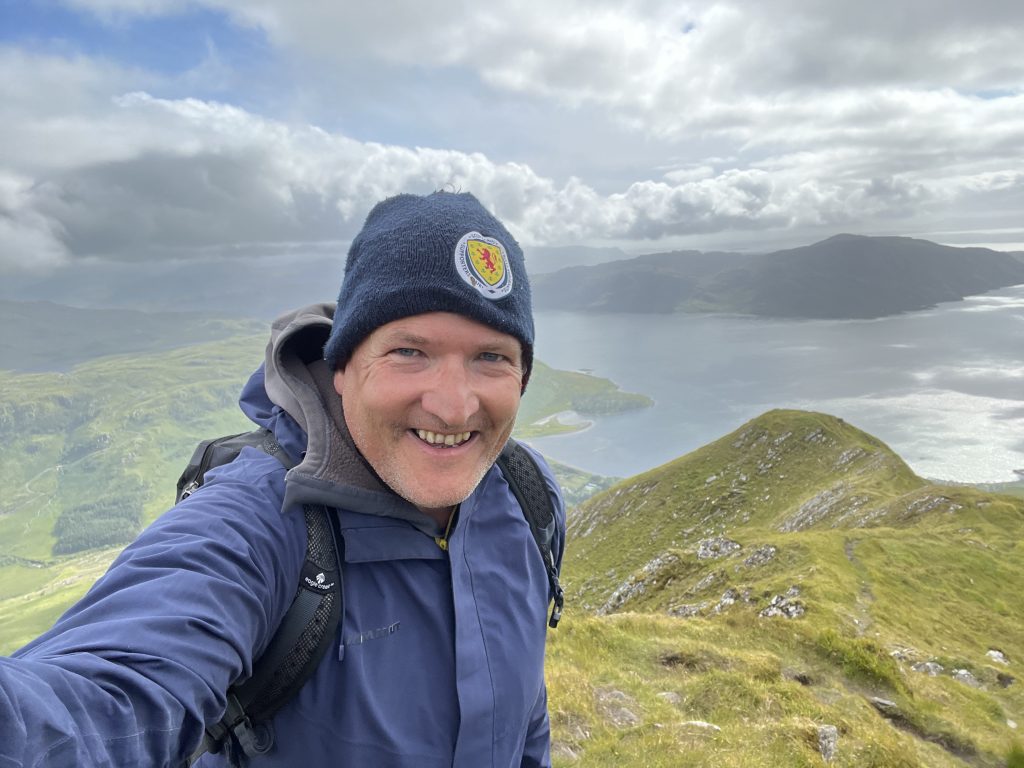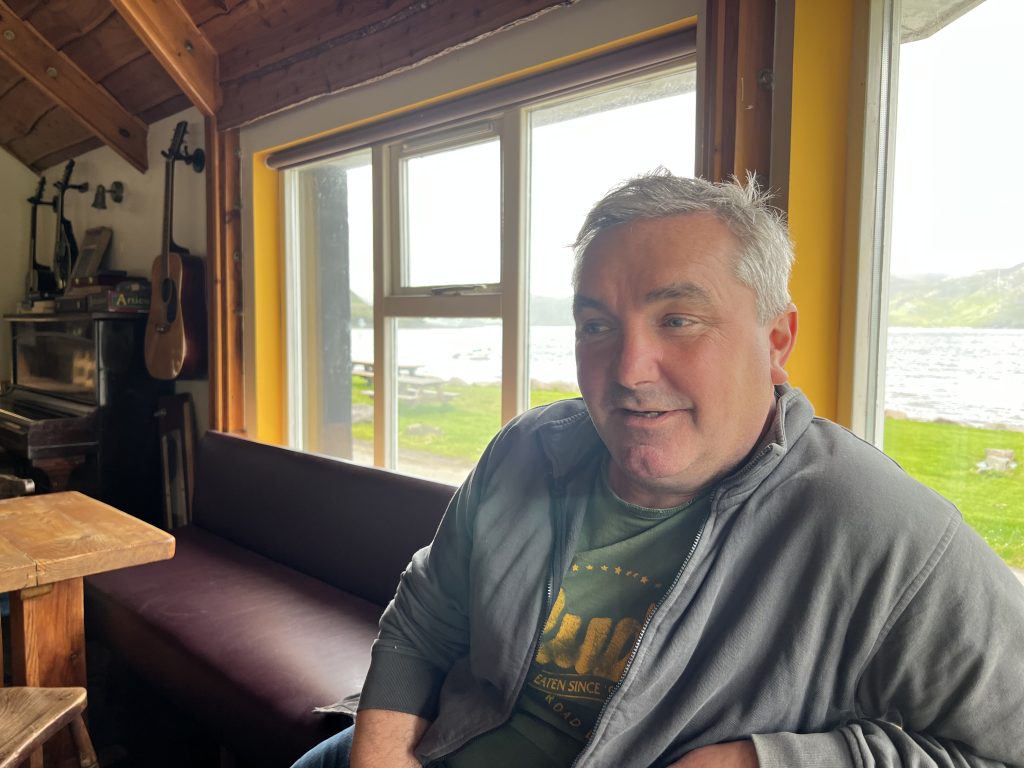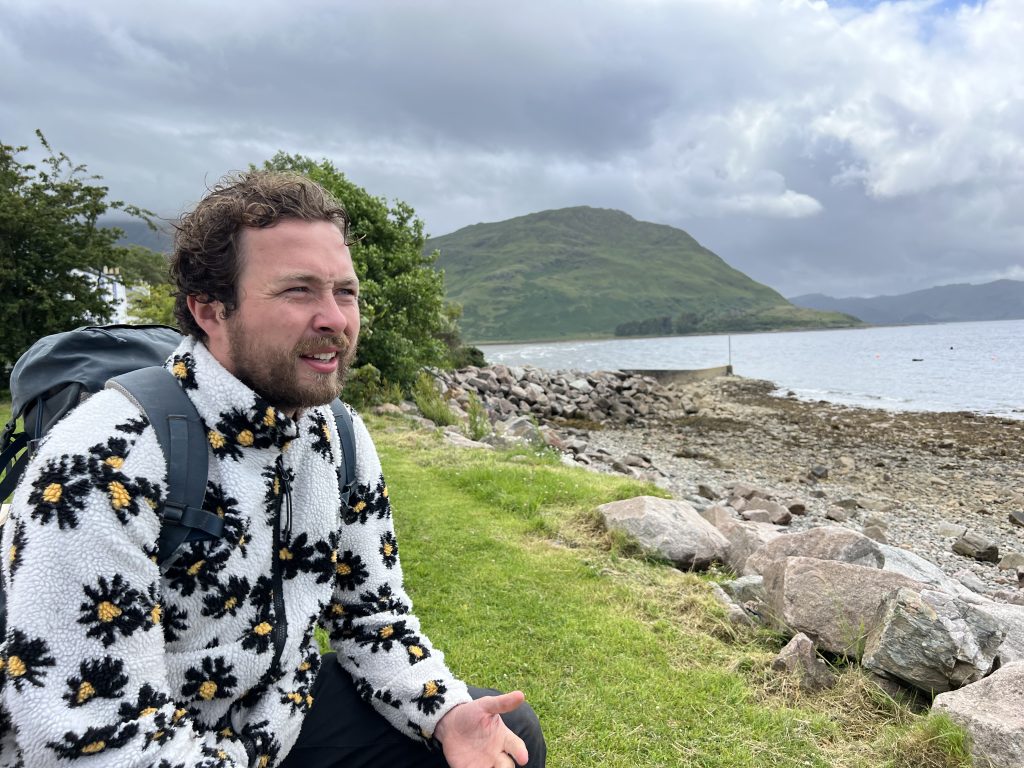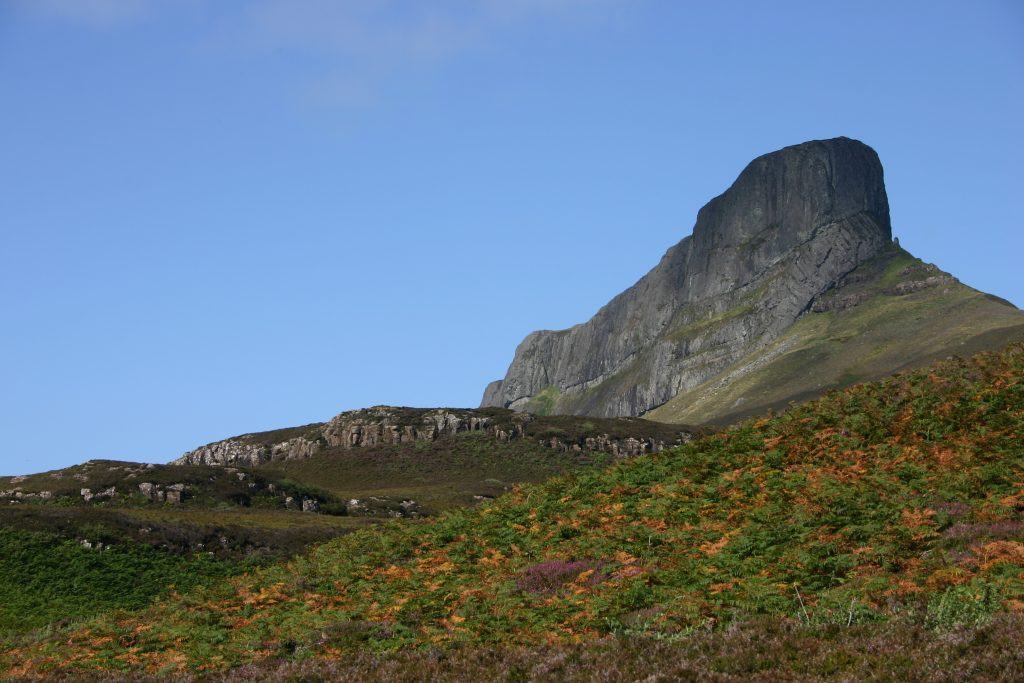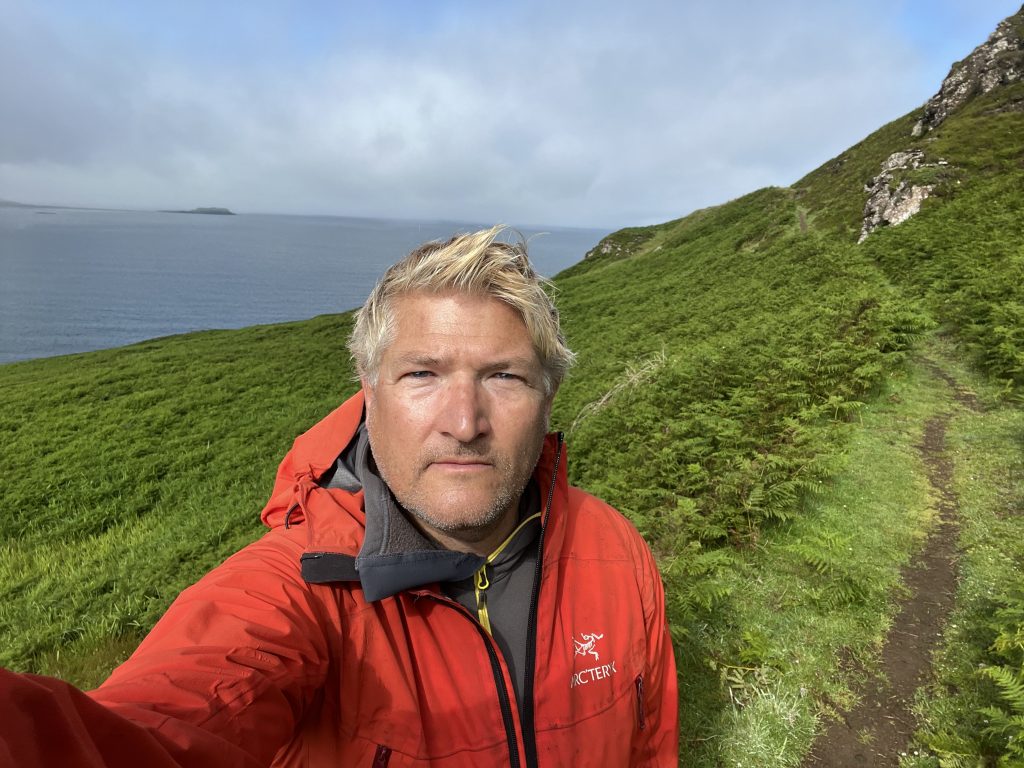By Robin McKelvie
This year is the official Year of Stories in Scotland. It is really no surprise that we are having this celebration as ours is a country alive with stories, rich with myth. Scotland is a nation driven by legend; tingling with folklore. And the tales are not just a intangible concepts as I found when I delved into the rich larder of the West of Scotland’s COAST website and headed to the Isle of Eigg and Knoydart to follow the stories.
COAST is a project that unearths – and brings to a wider audience – the rich storytelling culture and heritage of Scotland’s west coast, the ‘Coast that Shaped the World’. As a writer myself I’ve long been thrilled and inspired by the tales I hear on walks, in shops and – yes – in pubs up and down this wild and wildly beautiful coastline. COAST brings these stories together in a new way. You can read the stories, find out where they came from, and then explore the landscape and the world of the characters – real people, fictional creations and all stops in between – that inspired them.
Arriving into Knoydart by boat is a fitting way to start my own odyssey as I’m here in search of Spanish John. I arrive under scudding clouds, beneath the staggering heights of Knoydart’s brooding hills. It’s a landscape wild with history, wrapped in the baleful years of the Clearances.
I’m surprised how easy it is to find Spanish John. There he is right by the pier, standing proud. Or at least the cargo vessel that bears his name and provides a lifeline service to Knoydart. There is no doubt that Spanish John existed – his story on the COAST website comes courtesy of Mallaig historian Denis Rixson and his ‘Knoydart, A History’ book.
The ‘Story of Spanish John’ swirls around Knoydart-born Colonel John MacDonell. Sent to Rome aged 12 in 1740 he didn’t last long on the path to the priesthood, instead joining the Irish Brigade fighting in Italy for the Spanish, before returning home to join Bonnie Prince Charlie’s Jacobites. The stash of cash he brought came too late as he arrived to the news of Culloden and jail. On release he sailed for America and fought in the War of Independence, before fleeing to Canada to serve again, living to a grand old age of 82, leaving seven children! Read more here.
Spanish John’s autobiography is a deeply colourful tale. In the Old Forge in Knoydart I get closer to him with tall stories swishing around about Spanish John. It whets my appetite to get out amongst the hills and (now abandoned villages) he would once have roamed. Joining Knoydart Ranger Finlay Greig I hike up into the mountains. On a lofty ridge all the stories seem to ring true in a land larger than life. “Up here looking at this land of giant mountain and plunging glen, it’s easy to believe in legends,” smiles Finlay.
Etymology is a field ripe with storytelling opportunities. COAST ties into etymology in Knoydart, drawing again on Denis Rixson’s book. A story talks about ‘The Inventor of Blackmail’. It evokes Coll MacDonnell of Barrisdale, with his “devouring looks, bulky strides, an awful voice, a long and tremendous sword which he generally wore in his hand, with a targe and a bonnet edged broad on the forehead which imparted awe.” He extracted mail (often oats) – as a payment in kind – in return for protection of ‘black’ cattle from cattle raiders, all the while being in league with the latter.
Wandering Knoydart I imagine the grandeur of the two-storey mansion the man who brought the world the word ‘blackmail’ treated himself to, topped with blue slates. At the Brockett Memorial I think of MacDonnell too. Lord Brockett was a deeply unpopular Knoydart landlord, who presided over the lives of many people in the 20th century, including the legendary ‘Seven Men of Knoydart’. At least Coll MacDonnell’s politics were more agreeable. Brockett was a Nazi sympathiser and although later imprisoned as a suspected double agent, MacDonnell showed for the Jacobites at the victory at Prestonpans and distinguished himself for the Prince. For his fate you’ll have to read more on the COAST website.
We’re sailing now fittingly on a route that the Spanish John vessel takes many times today, across to another community benefiting from a successful buyout in the 1990s – the spectacular Isle of Eigg. When you start delving into the West Coast stories connections become manifest. On the COAST website there is Spanish John carrying what looks like the community-owned camping pods I’m staying at on Eigg. Reality and stories are starting to blur for me now.
If Knoydart offers a smattering of remarkable stories, Eigg dishes up a veritable smorgasbord. We kick off with Alastair McIntosh’s ‘Soil and Soul’, which features the story of ‘Tom Forsyth and the Eigg Community Buy-Out’. It follows crofter Tom Forsyth, whose pioneering work on establishing the Isle of Eigg Trust was instrumental in the historic Eigg community buyout in 1997. His manifesto was based around combining arts, spirituality and ecology to revitalise Eigg. Forsyth felt that “when a shoot is grafted on to an established root, the green of the root must meet the green of the stalk. The green, or cambium, is the only living and dynamic part of the plant. In the cultivation of human beings, the same natural law must apply.”
Forsyth was a visionary and his story is a brilliant backdrop to my first night on Eigg. I watch the sun burn down over the water enlivened by his words, his thoughts and forward thinking dancing amongst the flames of my campfire. His spirit is very much alive on Eigg today and you can delve deeper through COAST.
How communities on the often inaccessible parts of Scotland’s heavily indented, loch-ravaged west coast access essential services always fascinates me. And I find a COAST story for that too on Eigg. ‘The Air Ambulance in the Small Isles’ is told by Catriona White, farmer and local historian. It speaks volumes about the tricky nature of emergency care in the Hebrides, recalling a time in 1934 – a year after the air ambulance service started – that the plane couldn’t land on Eigg’s Laig Bay beach to deal with a critical emergency. You’ll have to read the full story on COAST to see what happened to the vanishing patient! I thought of him as I stood here on the sweeping sands of this spectacular bay.
And now we come to Camille Dressler, who everyone tells me in Eigg’s Galmisdale Cafe is simply the ‘Eigg historian’. I cannot imagine a better person to collate the Eigg stories as she really knows her stuff. While I am on Eigg I find the Church of Scotland has been given over to an exhibition she curated illuminating the feverish run up to the community buyout.
Dressler’s recounted tales appear no fewer than four times through COAST. Her first comes from her ‘Eigg, the Story of an Island’. ‘Eigg’s Puffer Cave’ tells the tale of the Jennie. Clyde puffers were once a workhorse of the Hebrides. This one faithfully served the isles until 1954 when, laden with a load of coal, she sank off Eigg’s rocky shoreline. Eigg’s own version of Para Handy is a fascinating story you can read here.
I thought of this ill-fated ship as I walked this gorgeous coast in thick mists, feeling how easy it would be to get into trouble in these wreck-filled waters. In the same book Dressler’s also touches on a story from the dreadful days of the Clearances, ‘The Fair Maid of Grulin’. It’s a story that lived on in people cleared from Eigg to Canada. It’s a boy meets girl tale with the tragic background of forced emigration underwriting its drama. I read about it after hiking out to this abandoned communities that sits between ocean and hill, its ghostly ruins whistling their stories through the wind.
Another Dressler tale recalls ‘The Wee Doctor in the Kilt’, a lovely yarn of a bekilted doctor who tended to arrive by canoe, which he carried up from the tide’s tentacles on his head. This multi-talented medic was also an amateur meteorologist, a bagpipe player who greeted new arrivals with music and a keen fisherman. The more I read about him the more fascinated I become – he was a veteran of D-Day and served as the local doctor until 1990. Reading about him in the Galmisdale on a long July evening I am half scanning the waters looking for his canoe. Read more here.
Dressler brings our own collection of stories to the end with a real symbol of the Hebrides and the Scottish West Coast – lighthouses. Her ‘The Eigg Stevenson Lighthouse’ covers how two disasters at sea led to a lighthouse being commissioned for Eigg. This story tells the terrible stories of SS Southesk, which sank on 28 December 1879 in the same storm that caused the Tay Bridge Disaster, followed weeks later by the SS Herman.
David and Charles Stevenson were commissioned to build a lighthouse on Castle Island in 1906: a cast iron tower lighthouse powered by acetylene gas. Today’s electronic lantern was installed in 2002, drawing on solar power. Looking for its light I think how very Eigg it is to have a solar-powered lighthouse. Eigg in 2008 became the first island in the world to generate all of its own electricity using green power. The more of the COAST tales I read the more they tie into the past, the present and the future of this beguiling part of the world. I thoroughly recommend you dive in too.
